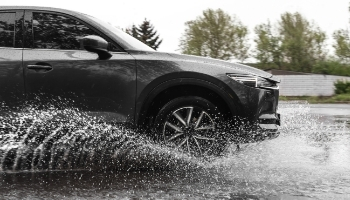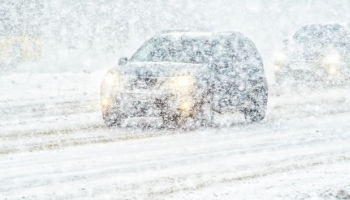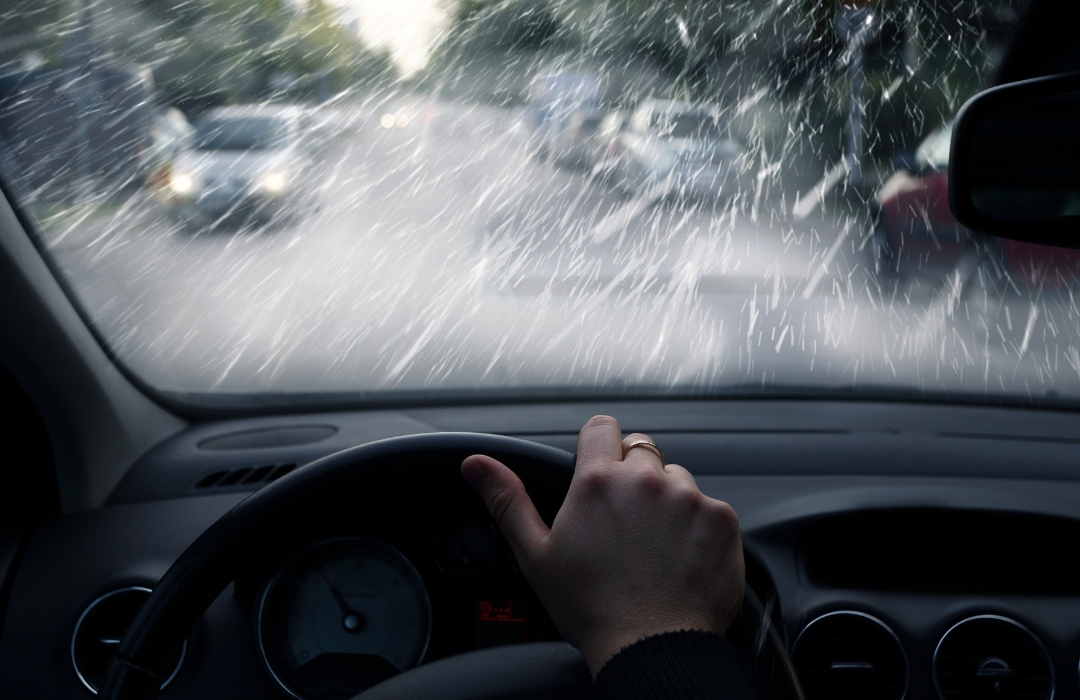Safe Driving in Hazardous Weather
The Federal Highway Administration estimates that more than 1.2 million weather-related accidents happen on U.S. roads each year, resulting in approximately 418,000 injuries and more than 5,000 deaths. Wet roads, snow and ice, and limited visibility all increase drivers’ chances of being in an accident.
Whether your employees drive as part of their job duties or only drive to and from work, everyone should know what to expect in hazardous driving conditions and what they need to do to get to their destination safely.
Heavy Rain
Heavy rains can make it hard to see traffic signs and signals, pedestrians, other vehicles, and anything else on or near the road. Wet roads can also increase your vehicle’s stopping distance. Roads are slickest during the first 10 minutes of a storm when oil, road grease and other debris create a film until the rain can wash it off. This film makes it difficult for your tires to get and keep traction. If the vehicle’s tires lose their grip, the vehicle can hydroplane and lose control until the tires get traction again, or until the vehicle runs out of momentum or hits something.

While it is raining, drive slower and increase your following distance to at least six seconds behind the next vehicle. Do not use cruise control on wet roads because you will have to pump your brakes to slow down, which can make a skid worse if your vehicle hydroplanes. Do not drive into standing water if you can avoid it, and never drive into flooded roads.
If your vehicle starts to skid, how you should react depends on which tires lose traction. If your back tires lose traction and the vehicle starts fishtailing, remove your foot from the gas pedal and steer into the skid, and try to resume control once you have traction. If your front tires slide, ease your foot off the gas pedal and slowly turn the wheel so the front tires are pointing straight ahead.
Winter Weather
Snow, sleet, freezing rain and ice can occur at temperatures around or below 32°F/0°C. These conditions can lower your visibility, increase your vehicle’s stopping distance and reduce traction, making it more difficult to control your vehicle.
Hard-packed snow can melt during the day and refreeze at night, creating a thin layer of ice over the road. Freezing rain and sleet can accumulate and turn into ice as temperatures drop. Ice is slippery enough to prevent tires from getting traction and can cause vehicles to skid. Ice can also build up on tree limbs and power lines, which can eventually break and fall into the road or on top of vehicles.
If there is snow or ice on your vehicle, make sure to remove it before driving, especially from your windshield, windows and mirrors. It is illegal in many areas to drive with snow or ice still on your vehicle’s body, since it can blow or fall off during travel, obstructing other drivers’ visibility and potentially damaging their vehicles.
Looking for more online safety training content?
VIEW THE 800+ COURSES AVAILABLE!

Drive slowly on snow-covered roads and increase your following distance to at least eight seconds. Use your low-beam headlights until cloud cover lifts, even if snow or ice has stopped falling. Shiny or wet patches of road could be black ice, which can make your vehicle lose traction and skid. Bridges, overpasses and shaded areas of the road freeze quicker, take longer to thaw and are more likely to have black ice, so be careful and slow down further in those areas. If you see snowplows or other road-clearing equipment, stay at least 15 car lengths behind and do not pass them.
Fog and Smoke
Driving is more dangerous any time visibility is reduced. Fog and smoke can both reduce visibility to only a few inches. Fog occurs when the dew point in an area is close to the air temperature. Water vapor in the air condenses into droplets, creating a cloud of moisture. Most fog will dissipate as the temperature warms or wind increases, but freezing fog can occur if temperatures fall below freezing. Freezing fog can stick to surfaces and create icy conditions similar to freezing rain.
Smoke often comes from wildfires or controlled burns. Smoke can affect how far you can see, but it can also irritate your eyes and lungs, and could even cause you to lose consciousness if you are exposed to it for long enough. Both fog and smoke can cover anywhere from yards to miles, depending on the temperature, wind and other weather conditions.

You should avoid driving in low-visibility conditions if possible. If you cannot avoid driving in fog, turn on your defroster once you start your vehicle to clear fog or frost off your windows. Keep your low-beam headlights on to help you see and make you more visible to other drivers.
Leave plenty of following distance in case you have to stop quickly. Traffic may be stopped, or an accident may have occurred that you might not see until it is right in front of you. Keep your eyes on the road, stay in your lane and avoid distractions.
If your visibility drops to near zero or if you do not feel like it is safe to drive, pull off the road and out of traffic. Ideally, you should try to find a parking lot, but you might just need to pull onto the shoulder. If so, park as far to the right as you can, turn on your hazard lights and stay in your vehicle until visibility improves.
Conclusion
We may not be able to control the weather or avoid driving in all hazardous weather conditions, but by slowing down, paying attention and taking precautions, drivers can protect themselves and others and reach their destinations safely.
SafetySkills offers a course on Hazardous Driving Conditions as part of our Driver Safety series to help make sure your employees know how to operate their vehicles safely in poor weather conditions.


